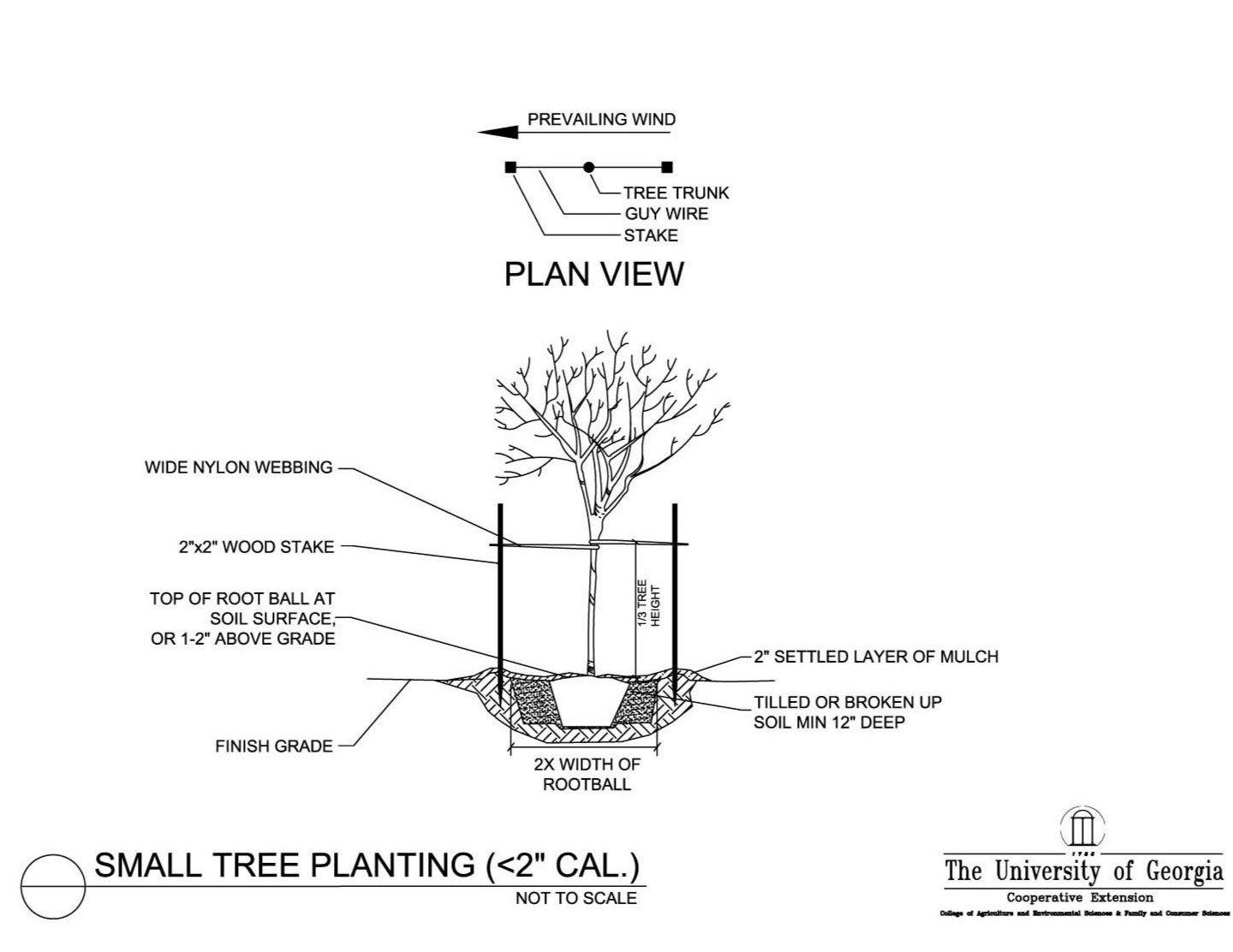Navigating the Challenges of Staking and Guying Urban Trees
A young tree with visible bark damage from poorly executed staking leading to near girdling.
In the landscape trade, staking and guying trees is a common practice, especially for supporting young or vulnerable trees. This intervention can be crucial for a tree's initial stability and growth. However, if not executed with precision and care, it can lead to many problems. Let's delve into the complexities and risks associated with this practice and explore how to mitigate them effectively.
Understanding the Risks
Compromised Growth and Stability: Improper staking can lead to poor tree development, characterized by reduced trunk diameters and smaller root systems. This stunted growth can result in trees that cannot stand upright once support is removed. Even more concerning is the increased likelihood of these trees breaking or toppling in high winds, a significant hazard in urban environments.
Trunk Damage and Girdling: The physical interaction between the tree trunk and support materials can cause serious harm. Continuous rubbing against the trunk leads to abrasions and, in worse cases, girdling. Girdling occurs when the support cuts into the tree, disrupting the flow of nutrients and water, and can harm the tree's overall health.
Abnormal Growth Patterns: How a tree grows in response to staking and guying can sometimes be counterproductive. There's a risk of the trunk bending away from the stake or becoming stressed at specific points. Over-tightening the supports can also prevent the tree from developing a proper taper, making it more susceptible to leaning or snapping during adverse weather conditions.
Potential for Injury from Supports: Installing stakes and guying must be done correctly to avoid causing injury to the tree. Incorrect installation can result in structural damage to the tree, impairing its growth and long-term health.
Damage from Prolonged Support: Leaving support systems in place for an extended period can be harmful. It's advised that the guying or staking materials should be removed after one complete growing season to prevent long-term damage.
The Pitfalls of Improper Support Techniques: Using the wrong materials or techniques for staking can exacerbate the risks. Staking trees too high, too tightly, or too long is a common mistake. Wide, smooth polymer straps are recommended over coarse ropes to minimize the risk of damage to the tree.
Best Practices for Mitigation
Given these risks, it's crucial to approach staking and guying with a strategy that prioritizes the tree's health and natural development. Here are some best practices:
Regular Monitoring and Adjustment: Regularly check and adjust the support systems to ensure they are tight enough and provide the intended support without causing damage.
Timely Removal of Supports: Remove the support systems as soon as feasible, usually by one growing season or year. This helps the tree develop its natural strength and resilience.
Use Appropriate Materials: Opt for gentle materials on the tree, like wide, smooth polymer straps, and avoid coarse materials that can cut into the bark.
Educate and Train: Urban forestry professionals and tree caretakers should be educated about the risks and proper techniques of staking and guying. This includes understanding when staking is necessary and when it can be avoided.
Proper planting detail.
Conclusion
While staking and guying play an important role in urban tree management, it's a practice that requires thoughtful consideration and careful execution. Understanding the potential risks and adhering to best practices can ensure that the trees in our urban landscapes grow healthy, strong, and resilient, contributing to the well-being of the urban ecosystem and its inhabitants.
Additional Resources
The linked PDF, titled "Tree Planting Details," is an extension publication by David Berle and Kim D. Coder from the Warnell School of Forestry and Natural Resources at the University of Georgia. It offers comprehensive guidelines for proper staking techniques, ensuring effective and safe support for newly planted trees.


